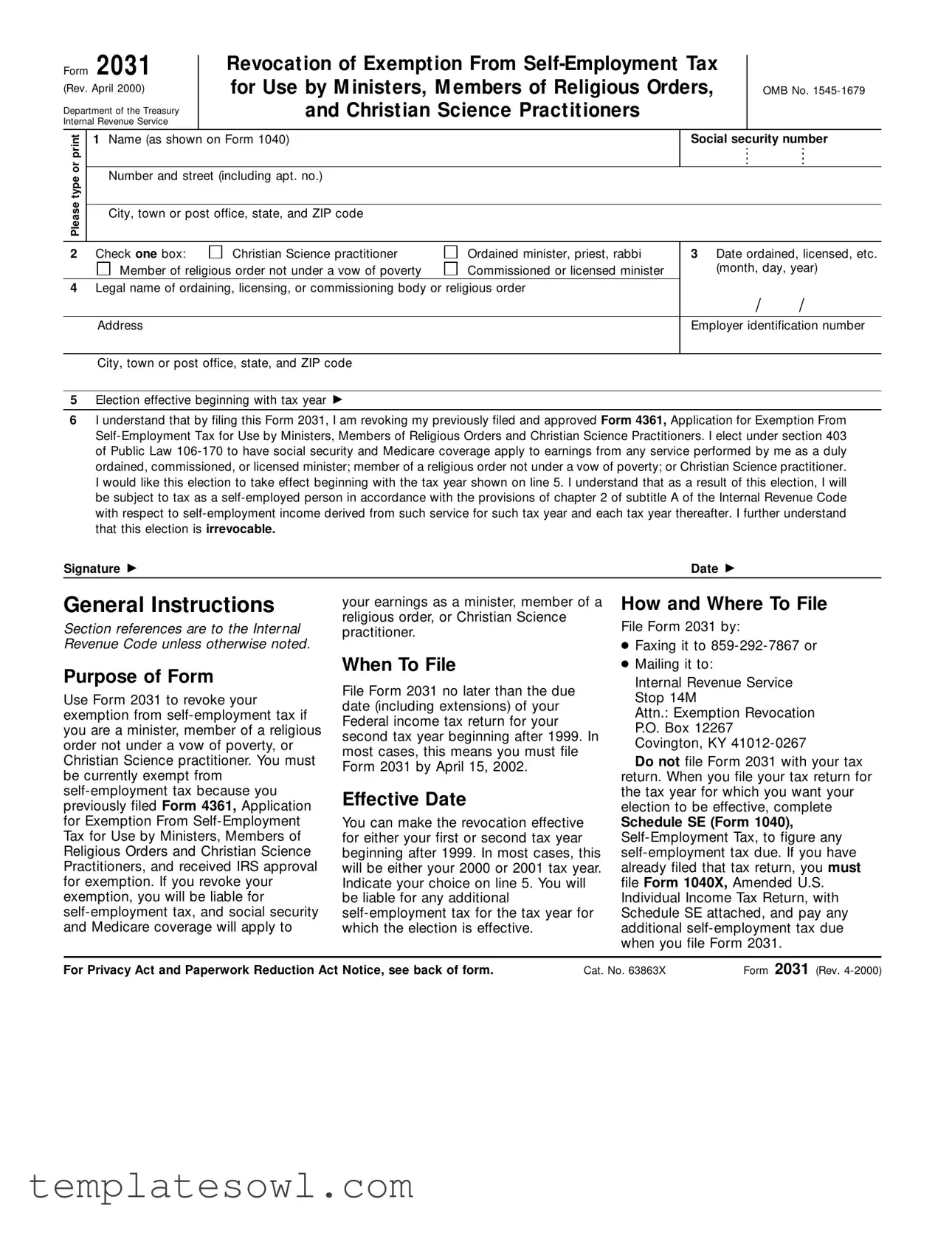What is Form 2031 used for?
Form 2031 is used by ministers, members of religious orders not under a vow of poverty, and Christian Science practitioners to revoke their exemption from self-employment tax. This form is necessary if you previously applied for and received an exemption using Form 4361. If this exemption is revoked, you will then be responsible for self-employment tax, and social security and Medicare will apply to your earnings from religious services.
When should I file Form 2031?
You must file Form 2031 no later than the due date of your Federal income tax return for the second tax year that begins after 1999. In most cases, this due date is April 15, 2002. This is critical for ensuring that your revocation becomes effective for the appropriate tax year.
How do I indicate the effective date for my revocation?
On line 5 of Form 2031, you need to specify which tax year the revocation takes effect. You can choose either your first or second tax year that begins after 1999, which typically equates to either the 2000 or 2001 tax year. Ensure that you clearly note your preference to avoid any confusion regarding your taxable status.
Where do I submit Form 2031?
Form 2031 should be submitted either by faxing it to 859-292-7867 or mailing it to the IRS at the following address: Internal Revenue Service, Stop 14M, Attn.: Exemption Revocation, P.O. Box 12267, Covington, KY 41012-0267. It is important to remember that you should not file Form 2031 with your tax return. Instead, any self-employment tax liabilities must be calculated using Schedule SE when you file your tax return for the relevant year.
What happens if I change my mind after filing Form 2031?
The election you make by filing Form 2031 is irrevocable. Once you revoke your exemption from self-employment tax, you cannot revert to your prior exempt status. This means that you will be required to pay self-employment taxes for the tax year indicated on the form and for all subsequent years. Make sure you fully understand your decision before submitting the form.


